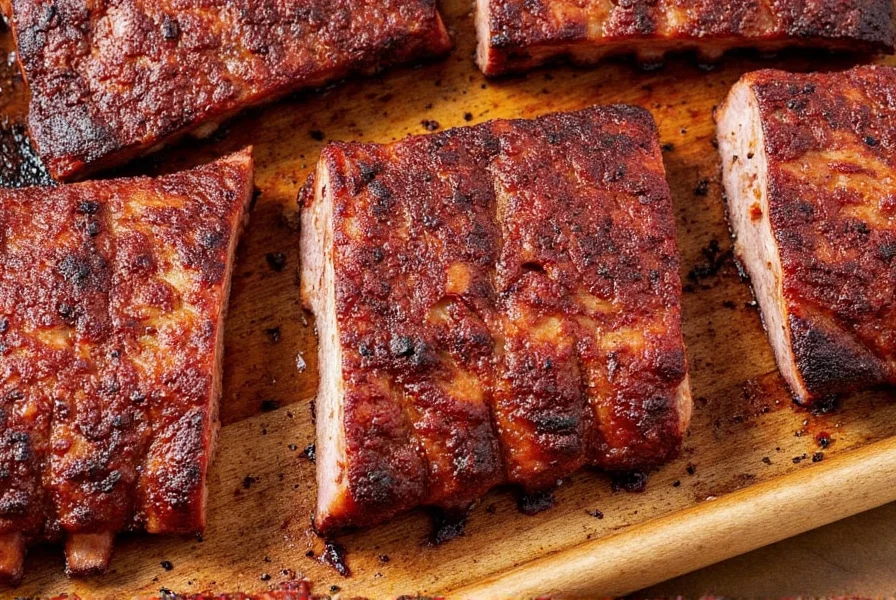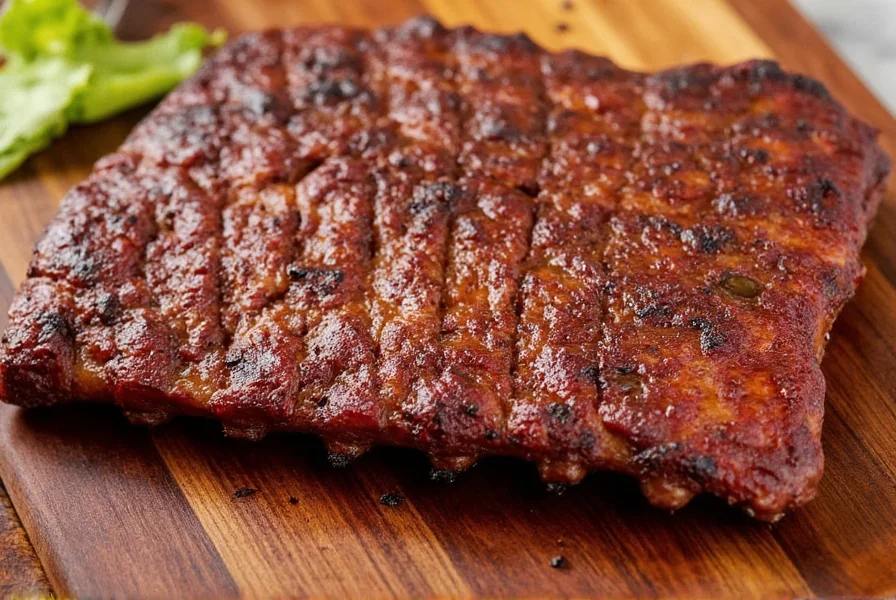10 Smokin’ Ribs Seasoning Rub Tips That Will Make Your BBQ the Talk of the Town
Table of Contents
- Why Ribs Seasoning Rub Matters
- Tip #1: Know Your Flavor Profile
- Tip #2: Balance Sweet, Salty, and Spicy
- Tip #3: Use Fresh Spices for Maximum Flavor
- Tip #4: Don’t Forget the Umami
- Tip #5: Apply with Care
- Tip #6: Let It Rest Overnight
- Tip #7: Tailor to Your Cooking Method
- Tip #8: Try Regional Twists
- Tip #9: Store It Right
- Tip #10: Taste as You Go
- Buying Guide: Top 5 Ribs Seasoning Rubs
- Final Thoughts
Why Ribs Seasoning Rub Matters
If you’ve ever bitten into a perfectly seasoned rack of ribs and felt that magical moment when flavor explodes in your mouth, you know how important the right ribs seasoning rub can be. Whether you’re a weekend griller or a pro pitmaster, mastering the art of the dry rub is essential for great barbecue.
A good ribs seasoning rub isn't just about throwing a bunch of spices together — it's about balance, timing, and technique. In this article, we’ll walk you through ten practical, easy-to-follow tips that will take your rib game from good to unforgettable.
Tip #1: Know Your Flavor Profile
The first step in choosing or making a ribs seasoning rub is understanding the flavor profile you want. Do you prefer sweet and smoky, spicy and bold, or maybe something earthy and herbal?
| Flavor Type | Common Ingredients | Best For |
|---|---|---|
| Sweet & Smoky | Brown sugar, paprika, molasses, garlic powder | St. Louis-style or baby back ribs |
| Spicy & Bold | Cayenne, chili powder, black pepper, onion powder | Those who like heat and complexity |
| Herbal & Earthy | Oregano, thyme, cumin, mustard powder | Mexican-inspired or fusion dishes |
Tip #2: Balance Sweet, Salty, and Spicy
Think of your ribs seasoning rub like a symphony — each component plays its role in harmony. A balanced mix should include:
- Sweetness: Usually from brown sugar or honey granules
- Saltiness: From kosher salt or sea salt (never iodized!)
- Heat: Cayenne, crushed red pepper, or chipotle powder
Tip #3: Use Fresh Spices for Maximum Flavor
Old spices are like flat soda — they just don’t sparkle anymore. If your spice cabinet looks like it came from the 90s, it’s time for a refresh.
- Whole spices last longer than ground ones
- Buy in small quantities for peak potency
- Store in airtight containers away from light and moisture
Tip #4: Don’t Forget the Umami
Umami is the fifth taste — deep, savory, and satisfying. Add depth to your ribs seasoning rub with these ingredients:
- Monosodium glutamate (MSG) – controversial but effective
- Dried mushrooms (especially porcini)
- Anchovy powder or Worcestershire powder
- Tamari or soy sauce powder
Tip #5: Apply with Care
You wouldn’t paint a masterpiece without prep — so don’t slap on your ribs seasoning rub without some TLC. Here’s how to do it right:
- Pat ribs dry with paper towels
- Coat both sides evenly — use your fingers for better grip
- Gently press the rub into the meat
Tip #6: Let It Rest Overnight
Don’t rush the process! Allowing your ribs seasoning rub to rest overnight (or at least a few hours) lets flavors penetrate the meat more deeply. Wrap the ribs in plastic and refrigerate.
Tip #7: Tailor to Your Cooking Method
Smoking, grilling, or oven-baking? Each method benefits from a slightly different ribs seasoning rub formulation.
| Cooking Method | Rub Recommendation |
|---|---|
| Smoking | Heavy on paprika and brown sugar for bark development |
| Grilling | Add more salt and less sugar to avoid burning |
| Oven-Bake | Boost herbs and garlic for concentrated flavor |
Tip #8: Try Regional Twists
Bring the world to your backyard with regionally inspired ribs seasoning rubs:
- Korean BBQ: Gochujang powder, sesame oil, ginger
- Mexican Street Style: Chili powder, lime zest, cilantro
- Caribbean Heat: Scotch bonnet powder, allspice, citrus zest

Tip #9: Store It Right
Make extra? Smart move! Store your homemade ribs seasoning rub properly to preserve freshness:
- Use clean, dry glass jars with tight lids
- Keep in a cool, dark place — not over the stove!
- Label with date and type of rub
Tip #10: Taste as You Go
Seasoning isn’t one-size-fits-all. Test your ribs seasoning rub on a small batch of meat before slathering it all over your entire rack. Adjust salt, sugar, or spice levels based on feedback.
Buying Guide: Top 5 Ribs Seasoning Rubs
If making your own isn’t your thing, here are five top-rated ribs seasoning rubs to consider, along with their features and best uses.
| Product | Features | Best For | Occasion |
|---|---|---|---|
| Brand A – Smokey Molasses Blend | Rich molasses base, smoky finish, minimal heat | Beginners or St. Louis-style ribs lovers | Family cookouts, school nights |
| Brand B – Carolina Heat Bomb | Vinegar-based, tangy, medium-high heat level | Purists who love Eastern NC style | Competitions, serious BBQ fans |
| Brand C – Honey Maple Glaze | Natural honey, real maple, mild smoke | Kids or milder palates | Weekend picnics, potlucks |
| Brand D – Texas Bold Blackened | Charcoal-grilled notes, coarse texture | Meat lovers, steakhouse vibes | Tailgating, big gatherings |
| Brand E – Global Fusion Mix | Jamaican jerk, Thai lemongrass, Italian herb options | Adventurous cooks | Dinner parties, themed events |

Final Thoughts
The magic of a perfect rack of ribs starts long before it hits the grill — it begins with a thoughtfully crafted ribs seasoning rub. Whether you're mixing your own blend or grabbing a trusted brand off the shelf, these tips will help you achieve rib greatness every time.
So fire up that smoker, grab your favorite tongs, and let your seasoning speak volumes. Your next rib adventure starts now!










 浙公网安备
33010002000092号
浙公网安备
33010002000092号 浙B2-20120091-4
浙B2-20120091-4